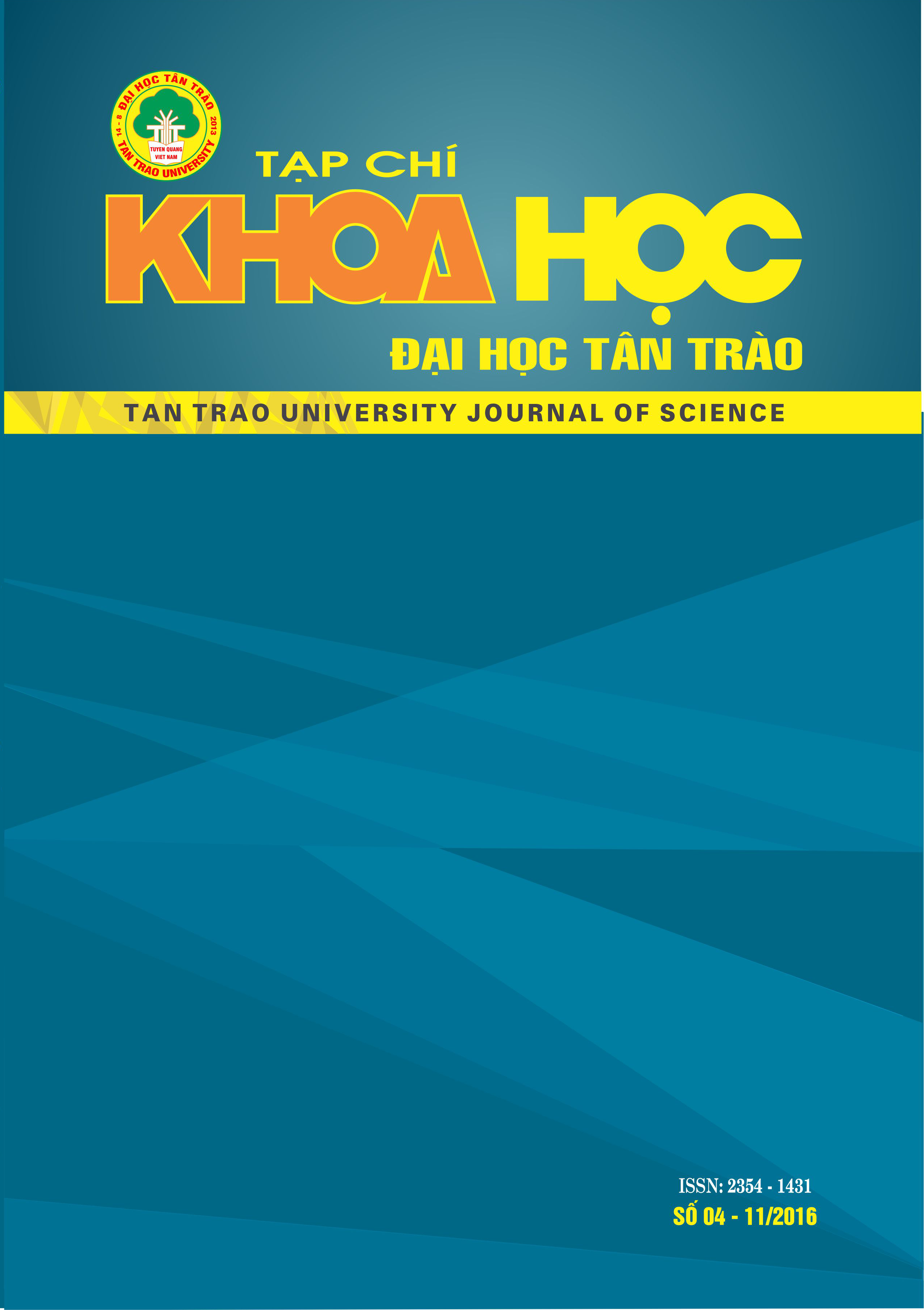A case study of regular teachers handling children with special needs in general education classrooms
DOI:
https://doi.org/10.51453/2354-1431/2016/99Keywords:
generalist teachers/classroom, inclusive classes/education, children with special needs, curricular modificationsAbstract
The Philippines implements Inclusive Education as a strategy to increase participation rate of
children in school. One of the program options in this implementation is the placement of children with special needs (CSN) in regular or general education classrooms where the child learns with his/her peers under the regular teacher who addresses the child's needs. This paper is a case study of
two regular teachers in such a situation which is aimed at exploring their readiness for inclusive
education, their challenges and curricular modifications and/or adaptations in addressing CSN. It also determined some ways to improve the implementation of inclusive education. A case study approachwas utilized in the conduct of this study, utilizing informative and contextual data. In particular, two
teachers were purposely involved in a one-on-one interview followed by a focus group discussion
(FGD). Through thematic analysis, it is revealed that the readiness of teachers was centered on the
concepts and beliefs on inclusive education. They acknowledged the feeling of being awkward and
uncomfortable in handling children with special needs for some hygienic problems like salivating and
excessive sweating. They also expressed a burden on handling children with behavioral problems
because it disrupts classes. The essential skills necessary in handling children with special needs is
wanting. This prompted the teachers to make some curricular modifications like giving a child
different but simplified activities from the regular children. Hence, this study recommends that more
in-service trainings be given for teachers who took up their education degree in the old curriculum so
that their capacity in handling inclusive classes will be enhanced and they would be able to give
appropriate curricular modifications to children with special needs.
Downloads
References
1. Alinsunurin, J. (2012). LCDPFI Conducts Forum on Inclusive Education in the Philippines. Retrieved: http://lcdphilippinesfoundation.org/news/lcdpfi-conducts-forum-on-inclusiveeducation-in-the-philippines-2.
2. Creswell, J. W. (1998). Qualitative inquiry and research design: Choosing among five traditions. Thousand Oaks, CA: Sage.
3. Creswell, J. W. (2006). Research design: Qualitative, quantitative, and mixed methods approaches(2nd ed.). Thousand Oaks, CA: Sage.
4. Dapudong, R. (2013). Knowledge and Attitude towards Inclusive Education of Children with Learning disabilities: The Case Thai Primary School Teachers.ISSN-L: 2223-9553, ISSN: 2223-9944 Vol. 4 No. 4 July 2013Academic Research International. Retrieved: www.journals.savap.org.pk
5. Fennel, Zachary (2013).Adaptations, Accommodations, and Modifications. Retrieved http://www.specialeducationguide.com/pre-k-12/inclusion/adaptations-accommodations and-modifications.
6. Jalotjot, E., et al (2013). Is your School Inclusive?- A Preliminary Survey of Selected SPED Centers in Southern Philippines. USEP, Philippines.
7. Jalotjot, E., et.al (2010). Evaluation of the Performance of SPED Teachers on Their Role in the Implementation of Inclusive Education. USEP, Philippines. TẠP CHÍ KHOA HỌC ĐẠI HỌC TÂN TRÀO SỐ 04 - THÁNG 11 NĂM 2016 99
8. Holdheide and Reschly, (2008).Teachers’ Preparation to Deliver Inclusion Services to Students with Disabilities. Retrieved: http://tgsource.org
9. Kimbrough, R., &Mellen, K. (2012).Research summary: Perceptions of inclusion of students with disabilities in the middle school. Retrieved [date] from http://www.amle.org/TabId/198/ArtMID/696/ArticleID/308/Research SummaryPerceptions-of-Inclusion-of-Students-with-Disabilities.aspx
10. Lay See Yeoa*, Wan HarChonga , Maureen F. Neiharta& Vivien S. Huana
(2013).Teachers' experience with inclusive education in Singapore.
11. Manguiob, Sharon Ross (2015). Reverse Inclusioin and the Learning Environment of Children with Special Needs.Unpublished Thesis.USEP, Davao City. Philippines.
12. Marland& Osborne (1990).In the Teaching and teacher Education. Classroom Theory, Thinking and Action.
13. Piyao, Y. (2012). A Case Study of an early Childhood Educator in an Inclusive Classroom Setting.Unpublished Thesis, USEP, Davao City. Philippines.
14. Quijano, Yolanda S. (2011). Inclusive Education: The Philippine Perspective. Presentations for Vietnam.
15. Quijano, Yolanda S., et al (2007). Introduction to Special Education. Manila. Philippines.
16. Takahashi, J. (2013). Suggestions for a Teacher Training Program for Inclusive Education in a Japanese University.Creative Education, 4, 509-513. doi: 10.4236/ce.2013.48074. http://www.scirp.org/journal/PaperInformation.aspx?PaperID=35490#.VbHMfbU6
17. Tornillo (1994).Concerns About and Arguments Against Inclusion and/or Full Inclusion. Retrieved: http://www.sedl.org/change/issues/issues43/concerns.html
18. DepEd Order No. 72, s. 2009, “Inclusive Education as Strategy for Increasing Participation Rate of Children. Retrieved: http://deped.gov.ph/orders/do-72-s-2009
19. DepEdOrder 50, s. 2014, “Guidelines on the Recruitment, Selection and Placement of Personnel Pursuant to the DepEd Rationalization Program Under Executive Order 366 s. 2004. Retrieved: http://www.deped.gov.ph/orders/
20. Indonesia's final National Report on Provision of Inclusive Education (4th draft).doc.Retrieved:http://www.ibe.unesco.org/fileadmin/user_upload/Inclusive_Education/Reports/ja karta_pecial Education Act of 2008, Article V, Sec 1 &2, page 6-7.
21. UNESCO (2001).European Agency for Development in SpecialNeeds Education. Retrieved: www.european.agency.org
22. UNESCO (1994).Inclusive Education: Article 2: Salamanca Framework. Retrieved:
Downloads
Published
How to Cite
Issue
Section
License

This work is licensed under a Creative Commons Attribution-ShareAlike 4.0 International License.
All articles published in SJTTU are licensed under a Creative Commons Attribution-ShareAlike 4.0 International (CC BY-SA) license. This means anyone is free to copy, transform, or redistribute articles for any lawful purpose in any medium, provided they give appropriate attribution to the original author(s) and SJTTU, link to the license, indicate if changes were made, and redistribute any derivative work under the same license.
Copyright on articles is retained by the respective author(s), without restrictions. A non-exclusive license is granted to SJTTU to publish the article and identify itself as its original publisher, along with the commercial right to include the article in a hardcopy issue for sale to libraries and individuals.
Although the conditions of the CC BY-SA license don't apply to authors (as the copyright holder of your article, you have no restrictions on your rights), by submitting to SJTTU, authors recognize the rights of readers, and must grant any third party the right to use their article to the extent provided by the license.


